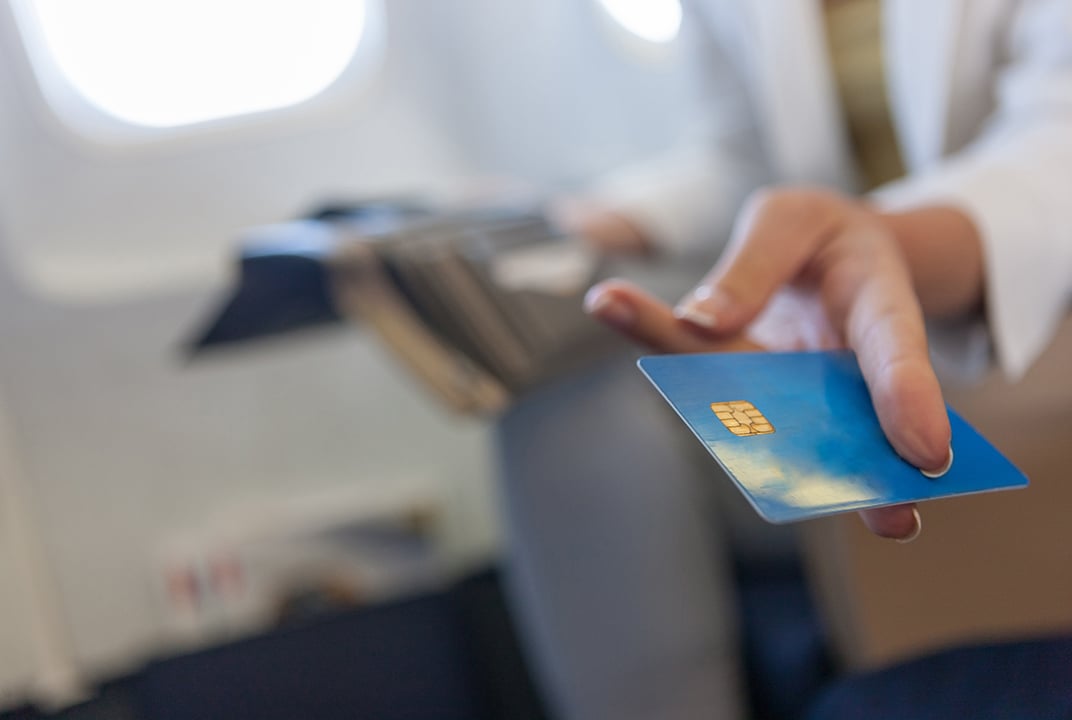Insight | Advertising, big data and the power of personalisation
Select Language
Advertising, big data and the power of personalisation
Airlines know more about their customers than ever before. So how could that information be used to release new revenue streams?
The great story of online retail over the last ten years has been one of data. Consumers who shop and browse the internet provide retailers with hitherto unimaginable quantities of information and the big e-commerce players have used this to personalise their offering and improve customer service.
The value of data is now such that, for social media companies like Facebook, user data is the product they sell. The reason Facebook has taken such a huge share of the advertising market is that it really knows its users. It simply has better data than old media and none of this would be possible without connectivity. Facebook’s great rise coincided with the appearance of smartphones and the always-on connectivity that has made social media a compelling proposition.
Until recently, 35,000 feet was a connectivity blackspot. The rich data that users give to companies like Facebook has been hard for airlines to access in the air. But with full inflight connectivity (IFC), all this will change. It will allow airlines to customise and personalise the entire travel experience. Working together, connectivity and data will boost airlines’ passenger satisfaction, improve the flying experience and increase ancillary revenue.
Personalisation sells
A 2016 survey by Accenture found that 96% of leading airline executives are in favour of personalising the air travel experience using real-time data. According to Mark Brown, VP EMEA of UK-based Fusion, which aims to ‘optimise customer interactions’, the more personalised the offer, the higher the sales. His company typically drives 20-25% growth in traffic for its clients when it optimises the products they want to sell. At the 2016 World Low-Cost Airlines Congress in London, Mark said that the sale of ancillaries is currently being held back by a ‘one size fits all’ approach to the on-board offering.
We are already seeing examples of how it works on the ground. Some airlines and online travel agents are using data and customer segmentation to deliver dynamic pricing. Millions of calculations over terabytes of data go into the price and seat offering most likely to get potential passengers to click on “buy”.
Customer data is beginning to change service in the air. Cathay Pacific, using small data, can predict the type of alcohol that first class passengers like to drink. Airlines, however, often have to bring customer data on board, with their crews downloading passenger histories to tablets while at the gate. Programmes like British Airways ‘Know Me’ service and United Airline’s ‘Collect, Detect, Act’, can go to the next level once they can access and react to real- time data provided by inflight connectivity. Using customer preferences as effectively as, say, Amazon or Uber will deliver more of the promise of the fully connected, tablet-enabled, all-knowing cabin crew. Smartphones installed with airline branded apps become more valuable platforms for offers and tailored experiences once inflight data is fed to them. Flight delays could, for instance, be countered with automatic rebooking options for frustrated customers before they land.
Flight time becomes prime time
Pervasive inflight connectivity will mean real-time data can open the controlled environment of the flight to the latest targeted digital messages that have become so familiar on the ground. The connected flight will become prime time for smart advertisers.
With real-time data, offers could be made based on the passenger’s data throughout the whole journey experience. Passengers may get used to making onward travel plans in the air once robust Wi-Fi is business as usual. Would the passenger like to book a taxi to the airport now? The advertising network could show real-time prices paid for by taxi brands at the destination. Would they prefer a train at their destination? The system could display discount adverts based on the travelling group. Messages can be tailored once the data indicates behaviours and preferences of passengers. If you choose a special meal a destination restaurant’s campaign could be programmed react to your selection. Last minute offers could fill last minute tables with passengers about to land in a new city.
Like the social media giants, airlines will be able to precisely target ads (and offers) and measure their effectiveness. Programmatic advertising has become commonplace in digital media. Consumers view ads after split second bidding by networks matches advertiser campaigns with opportunities to see. Connectivity will bring the seat back screen, inflight digital display and airline portal messages up to speed with the world of online advertising and transform the value of the ad opportunities that airlines control. Adding detailed customer information to contextual real-time behaviour, even if this is anonymous, will make the airline’s connected ecosystem valuable as a digital publisher.
Airlines host a captive audience
Airlines host a captive audience over long journeys, effectively holding consumers on their platform for longer than many media outlets could manage. Because the airlines already have customer segmentation and data around the flight aggregated, they can offer the chance to optimise advertiser messaging. Automated combinations of destination, seat class, device usage, language and customer history information could be combined with real-time data of passenger engagement to create precisely targeted sequences of messages. Connected airlines have the chance to become sophisticated media platforms and data sources.
Airlines could directly sell their connected ad space to advertising networks or agree revenue sharing with content providers. The connected inflight ecosystem will also produce enticing affiliate deals for certain sellers as the data emerges to prove which passengers are most ready to buy. Entertainment brands may pay or provide content for free so that flyers can try their subscription services. Qantas is offering a chance for Foxtel, Spotify and Netflix to trial subscription sampling with a free window. Airlines will be aware of the lifetime value of new acquisitions to subscription services. Revenue models may vary but the relevance of the flying traveller to certain brands will mean passenger attention can be sold at a premium by host airlines.
How the mix of advertising and sponsorship opportunities are displayed to the airline customer will depend hugely on the brand feel. Some brands may offer large sponsorship packages to single advertisers to give passengers free access to Wi-Fi and therefore reduce the advertising load. Others may offer ad-free paid packages. Either way passengers will still be producing huge amounts of valuable data.
The value of this sort of customer data is highlighted by the fact that Qantas has launched a customer insights programme where its data unit Red Planet sells customer information to third parties. Frequent flyers are given air miles in return for agreeing to share their information.
Once the passengers can be reached with this sort of dynamic messaging it becomes easier for airlines to transform their own inflight retail and ancillary sales. “We see major opportunities,” says Floris Reimbold, Lufthansa’s Head of Inflight Entertainment and Connectivity. “For example, we can offer our passengers lounge access or upgrades for onward flights.” He adds that airlines will also be able to make offers such as “mail order products delivered to your home or to the airport when you arrive” and prompt duty free sales.
For airlines, becoming truly data-driven will be a very steep learning curve. Big carriers gather great volumes of data but they are not adept at using it and it’s often left collecting dust. Access to real time IFC data will mean huge challenges, creating a step change in the volume and speed with which information will need to be acted on to be valuable. It will also involve considerations ranging from customer preferences to legislation to GDPR (General Data Protection Regulation). The roll-out will require trialling and constant feedback, not least because so much of this is unknown territory. Airlines such as Lufthansa have pointed out that they are already trusted with passenger data, but they must be careful not to damage strong relationships with initiatives that become too invasive.
The challenge, then, is for these newly connected carriers to partner with experts (who may range from providers like Inmarsat, to data analytics companies or other retailers) to ensure that the vast amount of information they hold is working for them. This is also an incredibly fast-moving area. New technologies such as AI mean that the data possibilities can become manageable rather than overwhelming.
Daunting as all this sounds, it’s an incredible opportunity for airlines to reinvent themselves both as companies that truly, deeply understand their customers and as the centres of new ecosystems of revenue. Data-driven air travel has enormous potential and if the airlines can get it right, in a few short years, they too might have a digital disruption story to rival that of today’s online retailers.


